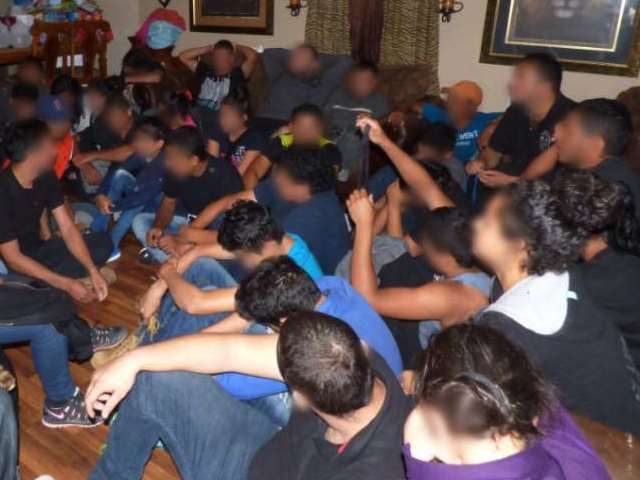U.S. Customs and Border Protection (CBP) officials report the disruption of more than 160 human smuggling stash house operations this fiscal year just in South Texas. The data provides a rare glimpse into the level of Mexican cartel stash house operations occurring in this region alone.
On August 27th, CBP Acting Commissioner Mark Morgan retweeted a video from U.S. Border Patrol Deputy Chief Raul Ortiz showing a recent stash house raid in Laredo, Texas. The tweet also provides detailed stash house data.
In the tweet, CBP reported that in South Texas alone in Fiscal Year 2020, which still has two months left in the year, the agency has already dismantled an astounding 160 stash houses and rescued over 1,600 people.
Stash house data is considered a gold mine by law enforcement officials and is routinely requested and sought after by elected leaders, journalists, and citizens attempting to understand the breadth of scope of smuggling and trafficking by criminal networks along the southwest border. Gaining access to data is often difficult.
The data on stash house operations is important because it indicates the level of cartel logistics occurring inside the U.S. Human smuggling operations are the life blood of the Mexican cartels’ smuggling and trafficking networks at the border. Smugglers along the border use a vast network of halcones, also known as falcons or hawks (lookouts) which extend over twenty miles into the United States in south Texas.
The scouts utilize two-way handheld encrypted radios and encrypted apps on cell phones like Zello. The scouts communicate directly back to Mexican smuggling and trafficking cells that work directly in collaboration with the Mexican cartels.
This network is how hundreds of thousands of pounds of illegal drugs and hundreds of thousands of people are smuggled across the border into the United States every year as they attempt to evade apprehension by law enforcement.
The goal for these criminal networks is to get the product (drugs or humans) across the border and into a stash house as quickly and rapidly as possible in order to evade law enforcement. Stash houses are an important component in smuggling as they provide a blanket that masks criminal activity along the border.
Human smuggling networks routinely treat migrants as a commodity. As seen in this video posted on August 12th, 2020 by Commissioner Morgan where you get to see a video recorded by a smuggler having no concern for human beings in terrible conditions.
Human smugglers often commit the crimes of human trafficking as well. As migrants are being smuggled it is common for smugglers to take advantage of them through force, fraud, and coercion. The smugglers also subject migrants to forced sex, labor, and indentured servitude. These crimes are routinely discussed by Commission Mark Morgan at his monthly meetings with the press from the Reagan building in Washington.
While the stash house data is nowhere near a complete and transparent picture of how prolific the issue is across the southwest border, it at least presents a rare glimpse behind the law enforcement curtain that hints at the level of challenges federal, state, and local law enforcement are facing in south Texas to stop human smuggling and human trafficking at the border.
Breitbart Texas regularly reports on a case-by-case basis about the efforts by Border Patrol agents along with state and local law enforcement officers to disrupt and shut down these cartel-connected human smuggling operations carried out on U.S. soil.
Jaeson Jones is a retired Captain from the Texas Department of Public Safety’s Intelligence and Counterterrorism Division and a Breitbart Texas contributor. While on duty, he managed daily operations for the Texas Rangers Border Security Operations Center.

COMMENTS
Please let us know if you're having issues with commenting.